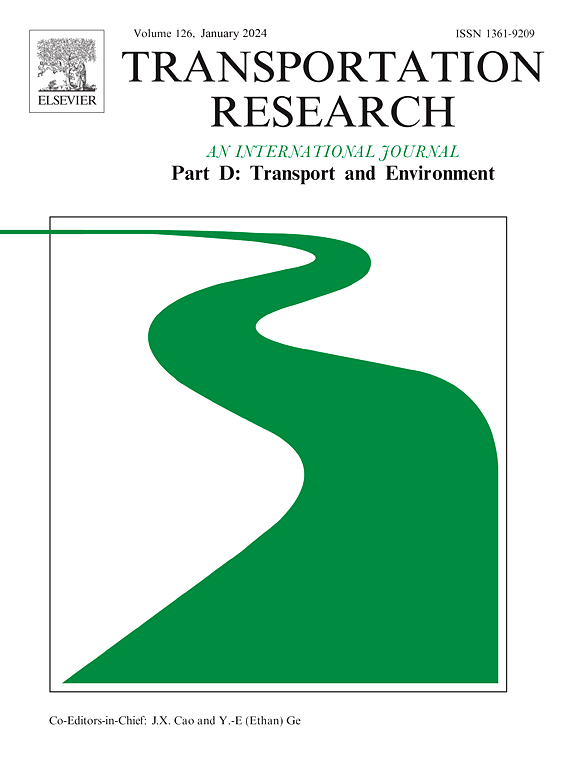Dynamic assessment of airport noise impact: A case study of Shenzhen airport
IF 7.3
1区 工程技术
Q1 ENVIRONMENTAL STUDIES
Transportation Research Part D-transport and Environment
Pub Date : 2025-04-08
DOI:10.1016/j.trd.2025.104741
引用次数: 0
Abstract
Airport noise significantly impacts the quality of life for residents near the Airport. Using dynamic population data, we assessed the exposure proportion—the ratio of people exposed to specific noise levels relative to the total population—and compared it with census data. Our findings show that throughout the day, the dynamic exposure proportion consistently exceeded the static exposure proportion, with the gap between the two narrowing as noise levels increased. The dynamic exposure proportion reached its maximum of 14.2 % at 5 PM, while the maximum difference between the dynamic and static exposure proportions occurred at 2 AM, with a value of 1.88 %. Additionally, we evaluated the spatial and temporal impact of airport noise, validated the developed noise model against the reference cases in ECAC Doc 29 Volume 3, and discussed the influence of fleet composition on exposure proportions. Based on these results, we propose recommendations for noise mitigation.
求助全文
约1分钟内获得全文
求助全文
来源期刊
CiteScore
14.40
自引率
9.20%
发文量
314
审稿时长
39 days
期刊介绍:
Transportation Research Part D: Transport and Environment focuses on original research exploring the environmental impacts of transportation, policy responses to these impacts, and their implications for transportation system design, planning, and management. The journal comprehensively covers the interaction between transportation and the environment, ranging from local effects on specific geographical areas to global implications such as natural resource depletion and atmospheric pollution.
We welcome research papers across all transportation modes, including maritime, air, and land transportation, assessing their environmental impacts broadly. Papers addressing both mobile aspects and transportation infrastructure are considered. The journal prioritizes empirical findings and policy responses of regulatory, planning, technical, or fiscal nature. Articles are policy-driven, accessible, and applicable to readers from diverse disciplines, emphasizing relevance and practicality. We encourage interdisciplinary submissions and welcome contributions from economically developing and advanced countries alike, reflecting our international orientation.

 求助内容:
求助内容: 应助结果提醒方式:
应助结果提醒方式:


